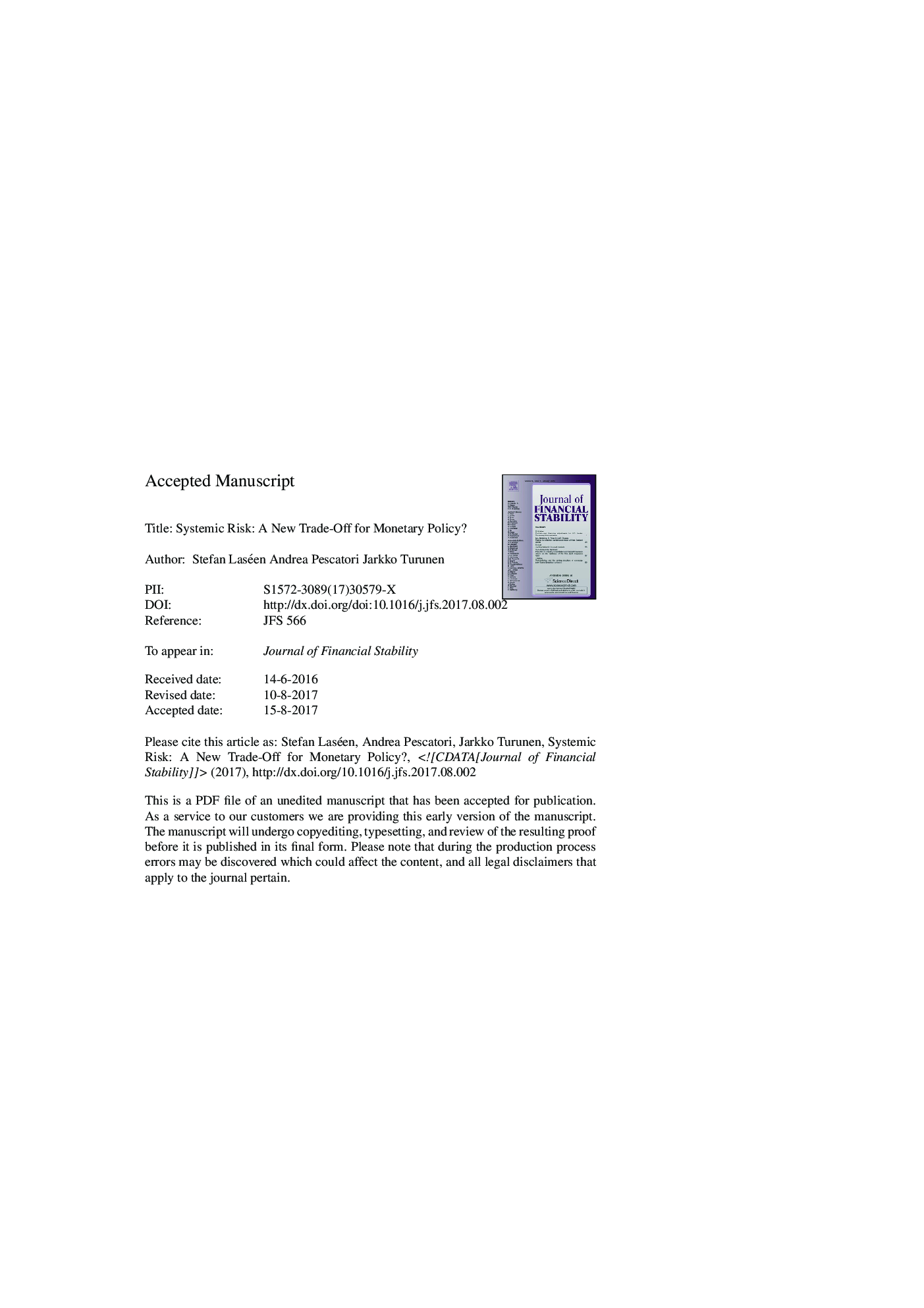| Article ID | Journal | Published Year | Pages | File Type |
|---|---|---|---|---|
| 5106484 | Journal of Financial Stability | 2017 | 46 Pages |
Abstract
We introduce time-varying systemic risk (Ã la He and Krishnamurthy, 2014) in an otherwise standard New-Keynesian model to study whether simple leaning-against-the-wind interest rate rules can reduce systemic risk and improve welfare. We find that while financial sector leverage contains additional information about the state of the economy that is not captured in inflation and output leaning against financial variables can only marginally improve welfare because rules are detrimental in the presence of falling asset prices. An optimal macroprudential policy, similar to a counter cyclical capital requirement, can eliminate systemic risk raising welfare by about 1.5%. Also, a surprise monetary policy tightening does not necessarily reduce systemic risk, especially during bad times. Finally, a volatility paradox a la Brunnermeier and Sannikov (2014) arises when monetary policy tries to excessively stabilize output.
Related Topics
Social Sciences and Humanities
Economics, Econometrics and Finance
Economics, Econometrics and Finance (General)
Authors
Stefan Laséen, Andrea Pescatori, Jarkko Turunen,
